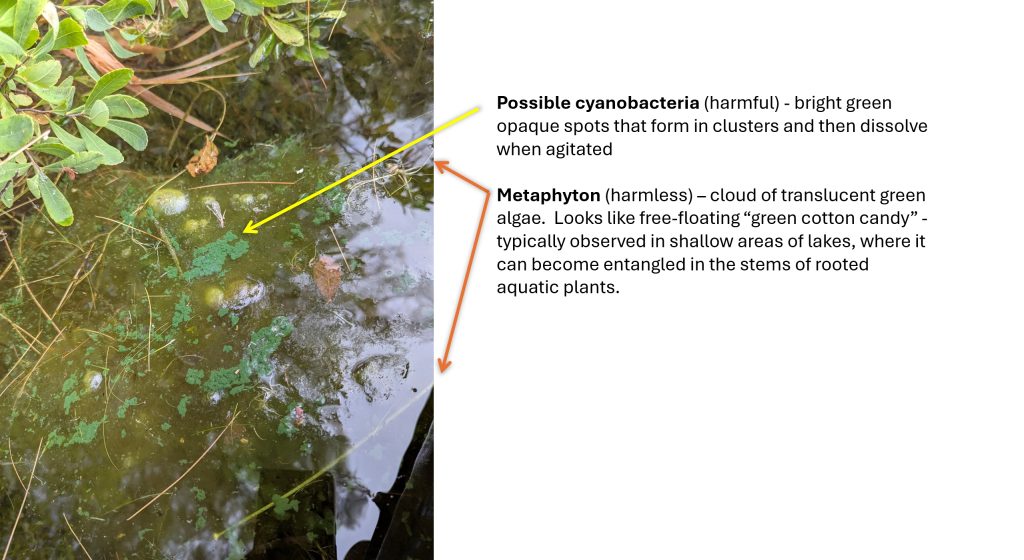Hi CPA Community,
We are sending out an update on water quality on the pond. To date, water quality tests continue to come back with good results.
However, one of our residents did spot some algae clusters on the pond that we believe are cyanobacteria*. (See picture below.) We did not spot a bloom, but the visible presence of these bacteria is one of the input factors that could lead to a bloom if we see the right conditions (hot weather, phosphorus loading, etc.) After a day or two, the bacteria dissipated and we haven’t seen any since. If we see this again we’ll try to get a sample and a positive identification.
Out of an abundance of caution, we wanted to share this news with the community and ask that if you spot the bright green clusters that look like those in the photo below, that you do three things:
- Notify the CPA officers: clemonspond@gmail.com
- Avoid touching the substance or letting people or pets swim through it
- If you are able, capture some of the substance in a jar (without touching it) and put it in a cool spot (ideally fridge, without contaminating any food) – we can have it examined to get a positive identification.
- If you are able, throw it up onto the shore to dry out (eg. capturing it in a bucket without touching it) – this will help reduce the content that could grow and contribute to blooms.
As a reminder:
- *Cyanobacteria (and blue-green algaes in general) are naturally occurring organisms in freshwater ponds. An issue arises when an overabundance of nutrients (phosphorus) feeds the bacteria and creates a bloom. Once blooms start, they are very difficult (nearly impossible) to address.
- The best way to avoid blooms in the future is to reduce erosion and nutrient-rich runoff from our properties. (e.g. avoid fertilizer with phosphorus, ensure you use lake-smart landscaping)
Thanks so much! Hope you’re all enjoying the summer!
Best,
The CPA Officers & Water Quality Team
